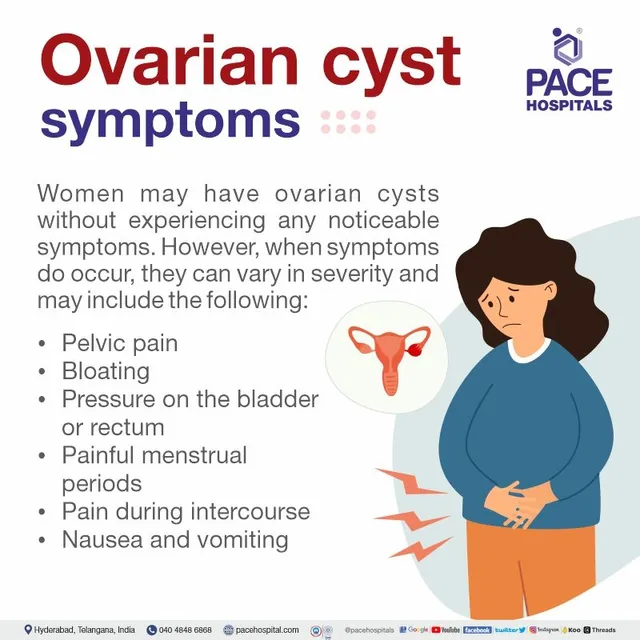Outline
Introduction
-
Definition of ovarian cysts
-
Importance of understanding ovarian health
1. Types of Ovarian Cysts
-
Functional cysts
-
Follicular cysts
-
Corpus luteum cysts
-
-
Pathological cysts
-
Dermoid cysts
-
Cystadenomas
-
2. Causes and Risk Factors
-
Normal menstrual cycle changes
-
Hormonal imbalances
-
Endometriosis and polycystic ovary syndrome (PCOS)
-
Age-related factors
3. Symptoms of Ovarian Cysts
-
Often asymptomatic
-
Common symptoms:
-
Pelvic pain or pressure
-
Bloating
-
Changes in menstrual cycles
-
Pain during intercourse
-
Urinary urgency
-
4. Diagnosis
-
Physical examination
-
Imaging tests:
-
Ultrasound
-
CT scan or MRI
-
-
Blood tests for hormone levels and tumor markers
5. Treatment Options
-
Watchful waiting and monitoring
-
Medication:
-
Hormonal contraceptives
-
Pain relievers
-
-
Surgical options:
-
Cystectomy (cyst removal)
-
Oophorectomy (ovary removal)
-
6. Complications and Risks
-
Ovarian torsion
-
Rupture
-
Potential for malignancy (rare)
7. Prevention and Outlook
-
Importance of regular pelvic exams
-
Lifestyle factors and prevention tips
-
Outlook for individuals with ovarian cysts
Conclusion
-
Recap of key points about ovarian cysts
-
Encouragement to seek medical advice for symptoms or concerns
Conclusion
Understanding ovarian cyst is essential for women’s health awareness. While most cysts are harmless and resolve on their own, some may cause discomfort or require medical intervention. Regular pelvic exams and awareness of symptoms can aid in early detection and treatment. If you experience persistent pelvic pain, changes in menstrual cycles, or other concerning symptoms, seek prompt medical advice for proper evaluation and management. By staying informed and proactive, individuals can take control of their ovarian health and ensure timely medical care when needed.
FAQs
Q1: Are ovarian cysts cancerous?
- Most ovarian cysts are non-cancerous (benign). However, some cysts, especially in older women or those with specific risk factors, can be cancerous. Regular monitoring and appropriate testing help detect any malignancy early.
Q2: Can ovarian cysts affect fertility?
- In general, functional ovarian cysts do not typically impact fertility. However, certain types of cysts or complications such as ovarian torsion can affect ovarian function and fertility. Consulting a healthcare provider is crucial for personalized advice.
Q3: What are the symptoms of a ruptured ovarian cyst?
- A ruptured ovarian cyst can cause sudden, severe pain in the pelvic area. It may also lead to bleeding and require immediate medical attention to prevent complications.
Q4: Can ovarian cysts come back after treatment?
- Yes, ovarian cysts can recur, especially if underlying conditions like hormonal imbalances or endometriosis persist. Regular follow-up with a healthcare provider is essential for monitoring and managing any recurrence.


